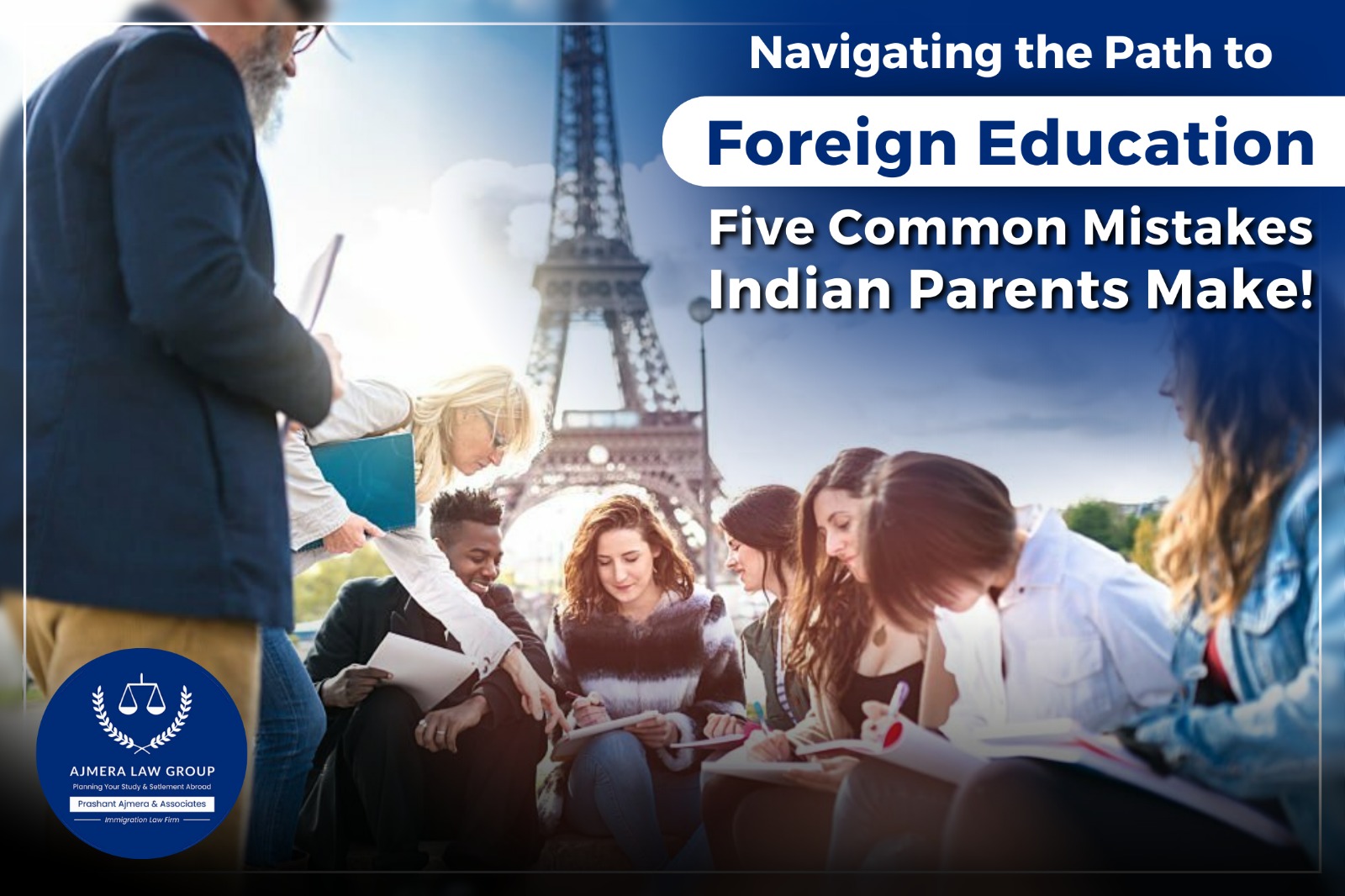“Navigating the Path to Foreign Education: Five Common Mistakes Indian Parents Make”
Introduction:
Embarking on the journey of sending a child to study abroad is a dream for many Indian parents. However, certain pitfalls often hinder the process, leading to missed opportunities and financial strain. In this blog post, we’ll shed light on five common mistakes made by Indian parents in their pursuit of providing an international education for their children.
1. Waiting Until Grade 12 or After Bachelor’s Degree:
One prevalent mistake is delaying the planning process until the child reaches Grade 12 or completes their bachelor’s degree. By then, crucial decisions about courses, universities, and application processes may be rushed, limiting the options available.
2. Lack of Financial Planning:
Financial considerations are paramount when sending a child abroad for education. Unfortunately, many Indian parents overlook the importance of early financial planning, including estimating the future need for foreign currency and accounting for the escalating costs of education in foreign countries.
3. Neglecting Research on Educational Institutes and Job Prospects:
A critical oversight is not thoroughly researching the quality of educational institutions, potential job prospects, and the likelihood of immigration for the child upon completing their studies. Understanding these factors is crucial for making informed decisions about the child’s academic and professional future.
4. Relying Solely on Foreign Education Loans:
While foreign education loans may seem like a convenient solution, solely relying on them can pose a significant risk to personal finances. Indian parents sometimes take loans without fully assessing the long-term implications, potentially jeopardizing their financial stability.
5. Avoiding Professional Assistance:
Many Indian parents, for various reasons, refrain from seeking professional help to navigate the complexities of planning their child’s foreign education. Engaging experts who specialize in this field can provide invaluable guidance on choosing the right course, university, and financial strategy, ultimately saving both time and resources.
Conclusion:
Embarking on the journey of sending a child to study abroad is a significant decision that requires careful planning and consideration. By avoiding these common mistakes, Indian parents can ensure a smoother process, laying a solid foundation for their child’s successful academic and professional journey overseas. At Ajmera Law, we understand the nuances of international education planning and are here to assist you every step of the way.
The author of this Blog is Mr. Prashant Ajmera, an Indian immigration lawyer and Canadian citizen. He is the founder of Ajmera Law Group and the author of two books, “Millionaires On The Book” and “How to Plan for Your Child’s Foreign Education.” Over the past 30 years, he has assisted and advised over 30,000 students and families on planning their foreign education and settlement. He regularly speaks at various forums on this subject.
Ajmera Law Group: Mo: +91 9974253030 | info@ajmeralaw.com | www.ajmeralaw.com





